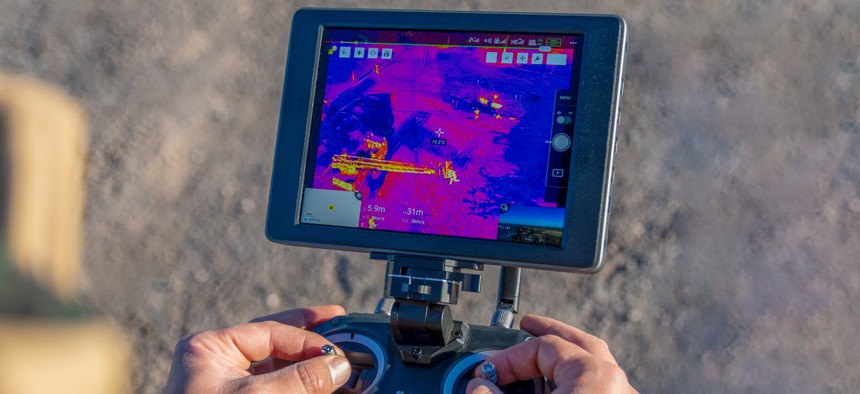Drones on the front lines in public safety operations

Wirestock/Getty Images
Drone networks that allow seamless communication among devices, first responders and dispatch centers enhance public safety operations.
Drones add the situational awareness that boosts the effectiveness of public safety response.
Agencies should consider a drone system that supports the flow of data and communications so that responders can integrate what’s happening on the ground with off-site decision-makers, said David Merrick, a coordinator of unmanned aircraft systems for Florida’s State Emergency Response Team.
“A camera in the sky is one of the simplest things that drones can do, but it’s also one of the most effective because [it] lets someone who’s 10 miles away see what’s happening and … start making decisions about what is needed,” Merrick said.
While cell phones and radios are common ways to maintain communications, public safety teams are venturing into mesh networks that can provide connectivity in isolated areas, he said. These self-contained networks consist of a group of connectivity devices, which Merrick likened to Wi-Fi routers. The network may be “slower than you’d like,” he said, but it still allows responders to preserve communications and share video or imagery.
Solid connectivity is the foundation for an effective public safety mission, he said. For example, drones that connect to wireless networks such as LTE or Starlink satellites can give responders livestream footage of events so they can allocate personnel and resources accordingly.
A cloud-enabled infrastructure is another key asset to support the storage and transfer of large data files collected during drone missions or mapping efforts, Merrick said.
A network-connected drone offers better operational effectiveness, said Charles Werner, director of Drone Responders Public Safety Alliance, a nonprofit that supports the use of unmanned aircraft systems in public safety missions.
In early 2020, for example, California’s Chula Vista Police Department relied on drone footage to de-escalate a potentially deadly situation. When officers were alerted of a man brandishing a weapon outside a taco shop, the department’s first move was to send a camera-fitted drone to investigate the scene, the San Diego Union-Tribune reported.
The drone enabled an officer at the headquarters to view live footage of the scene and communicate to responding personnel what was happening in real time. At first glance, it appeared the individual was holding a firearm, but the drone soon revealed it was really a gun-shaped cigarette lighter.
“That dramatically changes the police officers’ approach. This person may have been accidentally killed because he may have pointed the gun at the police—and it wasn’t really a real weapon,” Werner said. Once the responding officers learned there was no gun involved, they were able to arrest the individual without incident.
Drones can also provide real-time situational awareness and remove responders from potentially dangerous scenarios.
For instance, to assess a structure for fire damage, firefighters often walk around the facility in what’s called a 360-degree evaluation, Werner said, “but we still can’t see what’s on the roof or above looking down.”
If responders can deploy a drone with imaging capabilities above the building, “a thermal image camera [could] show us a heat signature through the roof that indicates that there’s a fire in that area and that the structural integrity … may be in question,” he said. In that case, responders would know to avoid accessing the roof.
Another use case might be a SWAT team searching a junkyard for a suspect. There, drones could take away some of the guesswork.
“The drone now gives you that look down so you can see … where somebody might be hiding,” Werner said, which could be lifesaving. If somebody were tucked away in a dump truck, “you wouldn’t want to stick your head over and look in because that might be the last thing you do.”
NEXT STORY: Demand heats up for grants management solutions






